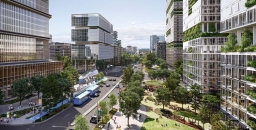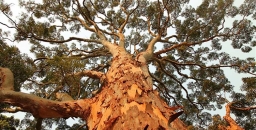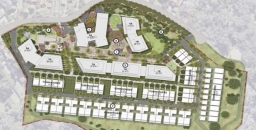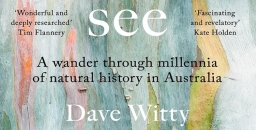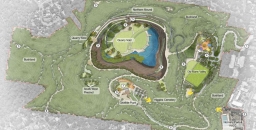In May the NSW government released regulations and codes that provide some of the detail on how the biodiversity legislation will operate in practice. But it is not complete so there is still a lot of uncertainty. The call for submissions is an opportunity to express a view on what should be in the areas that are missing as well as the available drafts.
There is a large volume of information to digest. The most useful one is the Submission Guide: Ecological Sustainable Development.
Consistent with STEP’s interests we focus on the aspects that relate to the management and preservation of urban bushland. Refer to our article on the issues regarding the Biodiversity Offsets Scheme.
The major areas that are missing are the Vegetation State Environment Planning Policy (Vegetation SEPP) and some of the maps that will underpin the decision-making process. This is most unsatisfactory! The legislation is due to come into force on 25 August. It is an abuse of due process to be conducting consultation on incomplete information.
The Vegetation SEPP will regulate clearing of vegetation in urban areas and environmental conservation/management zones where clearing does not otherwise require development consent under the main planning act, the Environmental Planning and Assessment Act. So the zones that are covered include E2, E3 and E4 zones.
The major concern is the inclusion of E2 zones in the clearing provisions. This zone is for areas with high ecological, scientific, cultural or aesthetic values outside national parks and nature reserves. The zone provides the highest level of protection, management and restoration for such lands whilst allowing uses compatible with those values.
E3 (environmental management) and E4 (environmental living) zones accommodate low-impact residential development but contain, or are near, bushland so have particular environmental or risk factors.
So why is the Vegetation SEPP regulating clearing on E-zone land, in particular E2 land? Clearing should not be allowed except for bushfire safety and other protection reasons.
Examples of land that could come under the new regulations are near the Blue Gum High Forest area in Dalrymple Hay Reserve and the area between Berowra Heights and Cowan near the Great North Walk. Most people assume the latter is national park but much of the natural scenery enjoyed by walkers is zoned E2, E3 and even RE1 (public recreation) and would have little protection under the proposed SEPP. Some E2 land is protected by being a BioBanking site or part of a conservation agreement, but not all.
Sensitive Biodiversity Values Land
There are certain areas, regardless of land area, that will require a biodiversity assessment (and offsetting if clearing is approved) if they are mapped in a Sensitive Biodiversity Values Lands map. The definition of areas included is very restricted.
Comment for submissions
The final map is not available and we understand many parts of NSW have not been properly assessed yet.
The resolution of the draft map on the website is too low to identify particular sites.
Areas that don’t meet the definition and should be included are endangered ecological communities (e.g. Sydney Turpentine Ironbark Forest and Duffys Forest EECs), buffer zones around EECs and areas of critical habitat, e.g. Ku-ring-gai Flying Fox Reserve.
Will it be possible to nominate areas for inclusion? Local land managers should be able to have a say on what is Sensitive Biodiversity Values Land.
There is a real danger that clearing of EECs such as STIF could rapidly turn it into critically endangered. A council’s discretionary DCP would be the only protection. It takes some time for a change in classification of vegetation communities to be finalised. In the meantime will they be cleared beyond hope of recovery?
Clearing Provisions
The clearing provisions are determined by categories of development.
Development consent required
Development consent is required (under the Environmental Planning and Assessment Act) for larger developments and infrastructure.
The Biodiversity Assessment Method (BAM) applies to clearing and the flawed offset provisions will apply.
Development consent NOT required
When development consent is NOT required, e.g. clearing of undeveloped land, the Biodiversity Offset Scheme (BOS) thresholds apply as prescribed below:
Minimum lot size | Proposed area of clearing |
Less than 1 ha (10,000 m2) | 2,500 m2 or more |
Less than 2 ha | 5,000 m2 or more |
2 to 39 ha | 5,000 m2 or more |
The thresholds are high.
For clearing above the threshold the BOS applies and approval will be determined by the Native Vegetation Panel. A biodiversity offset obligation will be imposed. Local councils could be given authority to do this assessment. We don’t know who will be appointed to the Native Vegetation Panel.
Clearing below the threshold will be regulated under the local council’s Development Control Plan (DCP) through a permit system. This will be the most likely situation in urban areas,
There is currently wide variation in the standards of DCPs, for example in relation to individual trees. Ku-ring-gai requires a permit for clearing of most native trees and vegetation and non-native trees while Hornsby only controls clearing of locally endemic native trees or trees in heritage zones. It is possible that the government will impose standard clauses in DCPs. Indeed would these be desirable if a high standard is applied?
Comment for submissions
It is essential that the objectives of clause 5.9 of the standard LEP are carried over to DCPs under the new scheme that is ‘to preserve the amenity of the area, including biodiversity values, through the preservation of trees and other vegetation’.
Submissions should explain desirable standards for the DCP regulations. One area that has not been covered is how the DCP clearing codes will fit in with the need for wildlife corridors and the Greater Sydney Commission’s guidelines for the Green Grid and minimum tree canopy cover.
Other Impacts of Clearing Regulations
A major issue with the local regulation of clearing is that there will be no monitoring of loss of vegetation communities and assessment of cumulative impacts. There needs to be a database of regional clearing approvals.
There is uncertainty about the legal status of DCP regulations and the ability to prosecute if breaches occur.
Areas of western Sydney that will be subject to the greatest amount of new development need as much protection as possible of native vegetation and habitat. The Cumberland Plain Woodland has already had large areas cleared. The allowable clearing and the use of offsets under the proposed regulations will further reduce the area of remaining native vegetation and habitat.
Conclusion
Given the limited areas of bushland in urban areas, it is inevitable that there will be more losses of irreplaceable biodiversity. The offsets provisions do not adequately factor in the scarcity of suitable offsets in urban areas (see article below). The rules must be amended to ensure maximum protection of native vegetation in urban and E zones, particularly areas containing threatened species.
Please Send a Submission
Closing date: Wednesday 21 June. Lodge online or post to Land Management and Biodiversity Conservation Reforms, Office of Environment and Heritage, PO Box A290, Sydney South, NSW 1232.


